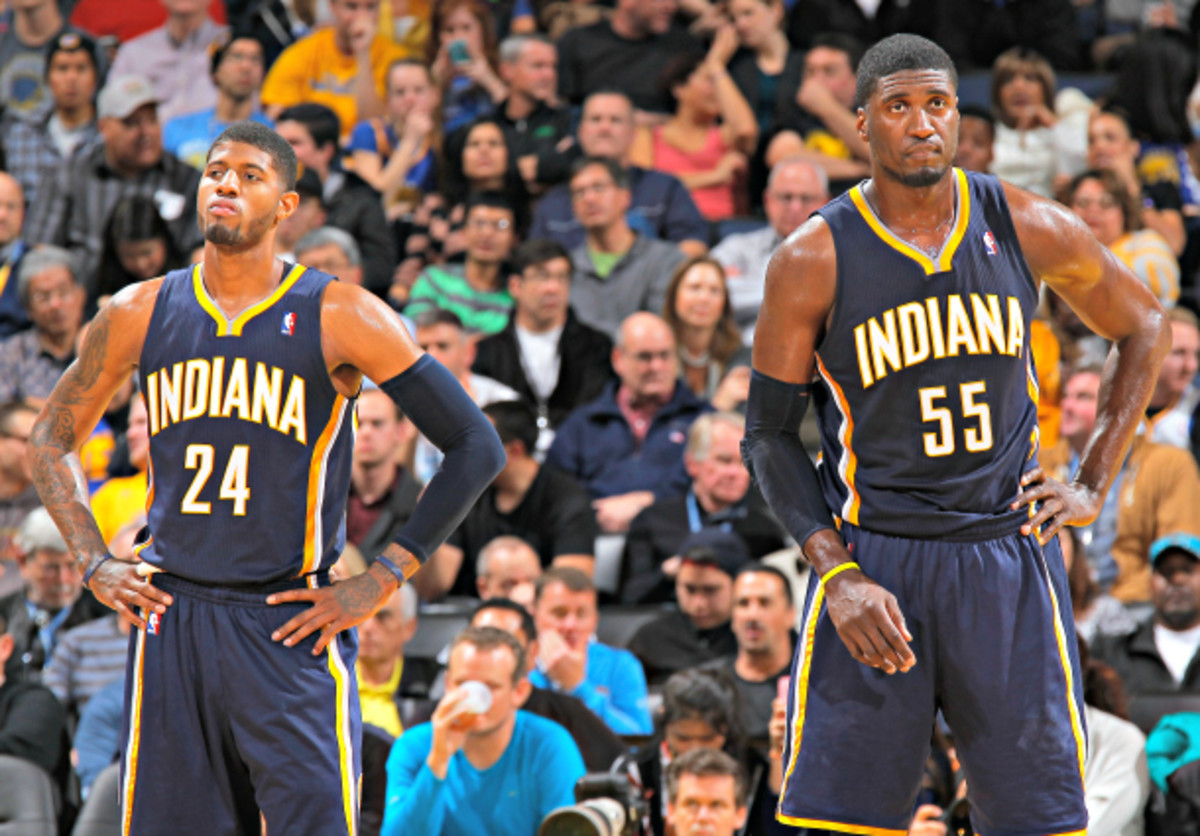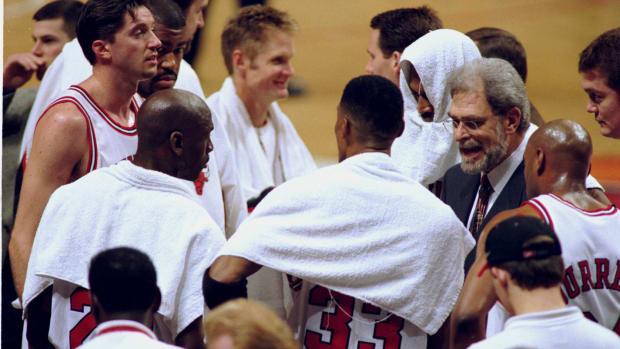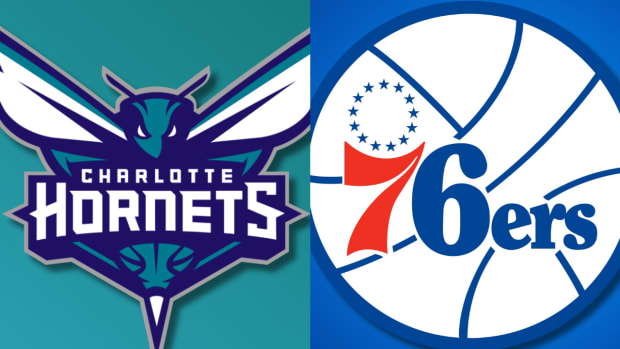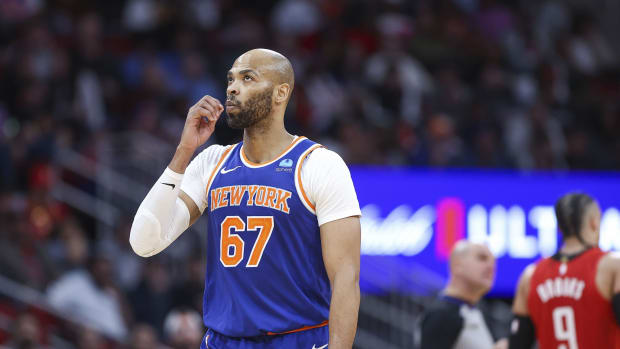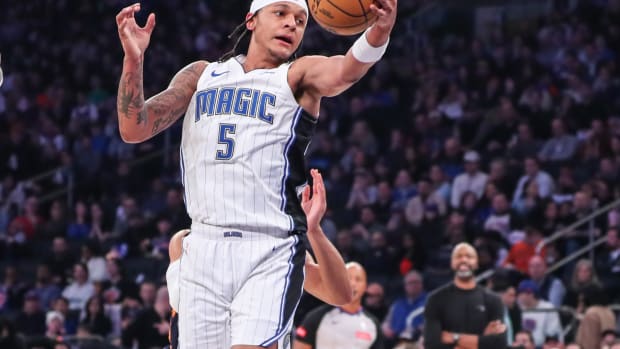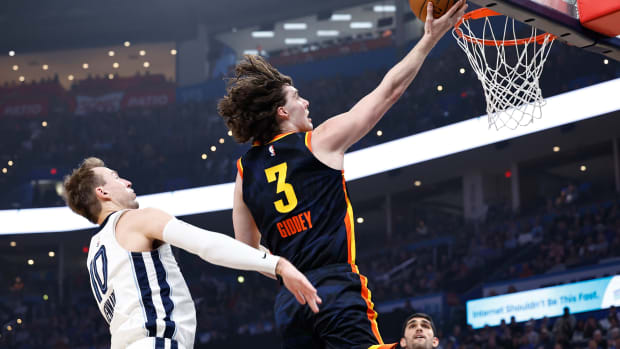The Fundamentals: Will Pacers' problems derail their once-promising drive for a title?
The Pacers, losers of six of their last eight, are falling apart. (Rocky Widner/NBAE via Getty Images)
With just seven games left in their regular season, the once-mighty Pacers have fallen into self-conscious calamity. The letdown was inevitable. Few teams in modern NBA history have dominated as thoroughly as Indiana did early this season, which in itself marked the Pacers as a candidate for regression to the mean. Unfortunately for Indiana, that doesn't even begin to cover the extent of its decline. Two months of mediocrity and a recent string of losses have sent these Pacers into a spiral of frustration and insecurity, with one woe only fueling the other.
All of which leaves a contender very clearly unsettled. The defense has lapsed more consistently of late, removing whatever room for error the offense once had. Steady offensive flow has given way to a certain lethargy, as those not immediately involved in a given play tend to disengage. Perhaps worst of all: The edge that sharpened Indiana's play now reads as contempt, stoked by every swing or entry pass not made.
"I just don't know if we're handling success and being out front the right way," power forward David West told NBA.com. "When we don't share the ball, we have 10, 15 possessions where we don't make a single pass, and you've got four guys, or nine guys on the floor watching one guy, watching two guys, it's on us. ... We've had that same sort of conversation over the last month and a half or so. We just haven't been able to apply that on the basketball court, particularly on the road."
GOLLIVER: What's next for Adam Silver as he defines himself as NBA commish?
One can see that tired dialogue play out in moments of all-too-deliberate execution. For a few possessions at a time the Pacers will work the ball down low, as is their supposed stylistic trademark. But attention to that objective fades quickly in favor of pull-up jumpers and sloppy, makeshift pick-and-rolls. Center Roy Hibbert diagnosed that tendency as "selfish," and he's not wrong -- though there's also something to be said about that same selfishness being a bit more tolerable when the shots fall. Really, small forward Paul George has been hunting shots all season. Those possessions simply take on a very different feel when he makes 45 percent of his mid-range shots (as he did in the first two months of the season) instead of 37 percent (as he has since).
It's not George's fault alone that the Pacers' offense has imploded. The fact that his prolonged slump lines up with Indiana's decay, though, is also no coincidence. Having a high-usage player capable of efficient returns is a powerful thing, so much so that the void of George's shooting has complicated Indiana's execution. Nothing in the Pacers' process is quite as it should be; the flow has changed, the momentum has reversed and over the last 15 games the scoring efficiency has plummeted so drastically as to produce a hugely negative net rating:
With George gunning, point guard George Hill tentative, backup guard Evan Turner oblivious and shooting guard Lance Stephenson removed from reality, the Pacers don't always have the mechanisms in place on the perimeter to ensure that the ball goes inside. Things naturally get worse in that respect the deeper Indiana digs into its bench, but the starters are far less reliable in that regard than they should be. One would think that at this point West and Hibbert would be able to trust their long-term teammates to patiently find the right entry angle or be willing to re-post if the situation demands it, yet both wind up forcing difficult attempts because neither can be counted on.
DOLLINGER: Pacers at No. 5 in latest NBA Power Rankings
That could be tolerable if the Pacers were a more intuitive offensive team, but they exhibit some pretty terrible spacing for a core of players that has been together this long. Turner's midseason acquisition plays a role there, but his worst offensive tendencies -- ball-stopping, lack of shooting range, etc. -- only accentuate Indiana's preexisting faults. This is a team that ranks 25th in three-point attempts and 21st in three-point percentage for the season; the Pacers don't have the ability to wedge open lanes for George or Stephenson or the balance in their natural offensive flow to facilitate the off-the-dribble dalliance that their top wings gravitate toward.
Consider this sequence from Monday's 103-77 loss to San Antonio, in which Stephenson looked to penetrate through a glut of defenders:
Or this sequence, in which the Pacers clumped together inside the arc after running an inbounds play:
The Pacers' starters have logged more minutes together over the past two seasons than any other lineup in the league, but they have a startling lack of improvisational shorthand on offense. Broken plays lead to awkward alternatives, often under the pressure of the shot clock after wasting time earlier in the possession. Indiana might bumble through a quick pick-and-roll or impromptu post-up, but neither comes off as cleanly as it should given the talent and familiarity of the players involved.
That much was disguised when George streaked through the early stages of this season and when Indiana dominated the offensive glass last year. Gradually, though, both of those layers of insulation have eroded. Smart opponents have begun crashing hard on George's drives, as they well should. Though George is a solid passer, he doesn't often make the kind of next-level skip passes that could exploit a contracting defense. What's left is often a meeker kick-out to an iffy shooter or a desperate, contested runner -- neither of which offers much creative value.
For a team that goes out of its way to create big, imposing lineups, Indiana is remarkably bad at generating easy baskets. It's the spacing. It's the impatience. It's the selfishness. But moreover it's just the Pacers; even at their best, this core has never come remotely close to ranking in the top third of the league in effective field-goal percentage, in part because that emphasis on size has taken away other means of efficient scoring. Rangy power forwards are in vogue for their practical facilitation, and though West and Luis Scola are reliable mid-range shooters, neither can open up the floor to a degree that can keep Indiana's driving lanes open.
That issue can be managed when the Pacers are clicking, whether through elite defense, second-chance opportunities or simply better chemistry. As it stands, though, Indiana is bleeding points almost across the board -- through its poor shooting, ever-present turnover problem and curious lack of offensive rebounding. That's a brutal mix indicative of a team without sanctuary.
It also yielded the league's second-worst offense over the past two months, "trailing" only the free-falling 76ers. That's enough to break even in terms of net tating, which is to say that Indiana's offense has been precisely as bad as its defense has been good. That's not a championship formula, but the Pacers still possess a lofty ceiling with ample room for title contention. We've seen the Pacers climb to league-leading highs despite burdensome offensive limitations, and we've seen them plummet to bleaker lows than many would have thought possible. Now, with this team's mettle and commitment being tested, we see if they can bounce back.
Statistical support courtesy of NBA.com. Graphics via Piktochart.
Photo credit: Nathaniel S. Butler, Bill Baptist, Jim McIsaac and Ron Hoskins/NBAE via Getty Images






























